Intrigued by the mysterious allure of darkness? We’ve gathered the most captivating riddles that play with shadows, night, and the absence of light. These brain teasers will challenge your mind while exploring one of humanity’s most primal fears and fascinations.
Our collection of darkness riddles ranges from easy puzzles perfect for kids to complex enigmas that will stump even the most seasoned riddle enthusiasts. Whether you’re looking to entertain friends at your next gathering or simply want to test your own problem-solving skills, these riddles about darkness deliver the perfect blend of entertainment and mental stimulation.
10 Mind-Bending Riddles About Darkness That Will Test Your Wits
- The Darker It Gets
The darker it gets, the more of me there is. Yet I vanish completely when light appears. What am I?
Answer: Darkness itself
- Silent Companion
I follow you constantly, never making a sound. On sunny days, I’m by your side, but when darkness falls, I can’t be found. What am I?
Answer: Your shadow
- The Midnight Traveler
Born in darkness, I live my brief life without ever seeing light. Many fear my presence, though I mean no harm. What am I?
Answer: A nightmare
- Endless Expanse
I contain billions of lights, yet I’m fundamentally dark. Without me, you wouldn’t see the stars at night. What am I?
Answer: Space/The universe
- The Seeing Paradox
In complete darkness, I can see everything. Yet in the light, I am blind. What am I?
Answer: Imagination
- Dark Symphony
I’m loudest in the darkness but completely silent in the light. I never speak, yet everyone hears me. What am I?
Answer: Fear
- Nocturnal Guardian
I work only at night, resting while the sun shines. I protect what’s valuable without weapons or armor. What am I?
Answer: A lock
- The Inevitable End
I come for everyone eventually, wrapping them in eternal darkness. Kings and beggars alike must face me. What am I?
Answer: Death
- Daylight Thief
I steal the daylight but give it back each morning. I bring stars into view but hide the sun. What am I?
Answer: Night
- Illuminated Paradox
What Makes Darkness Riddles So Captivating?
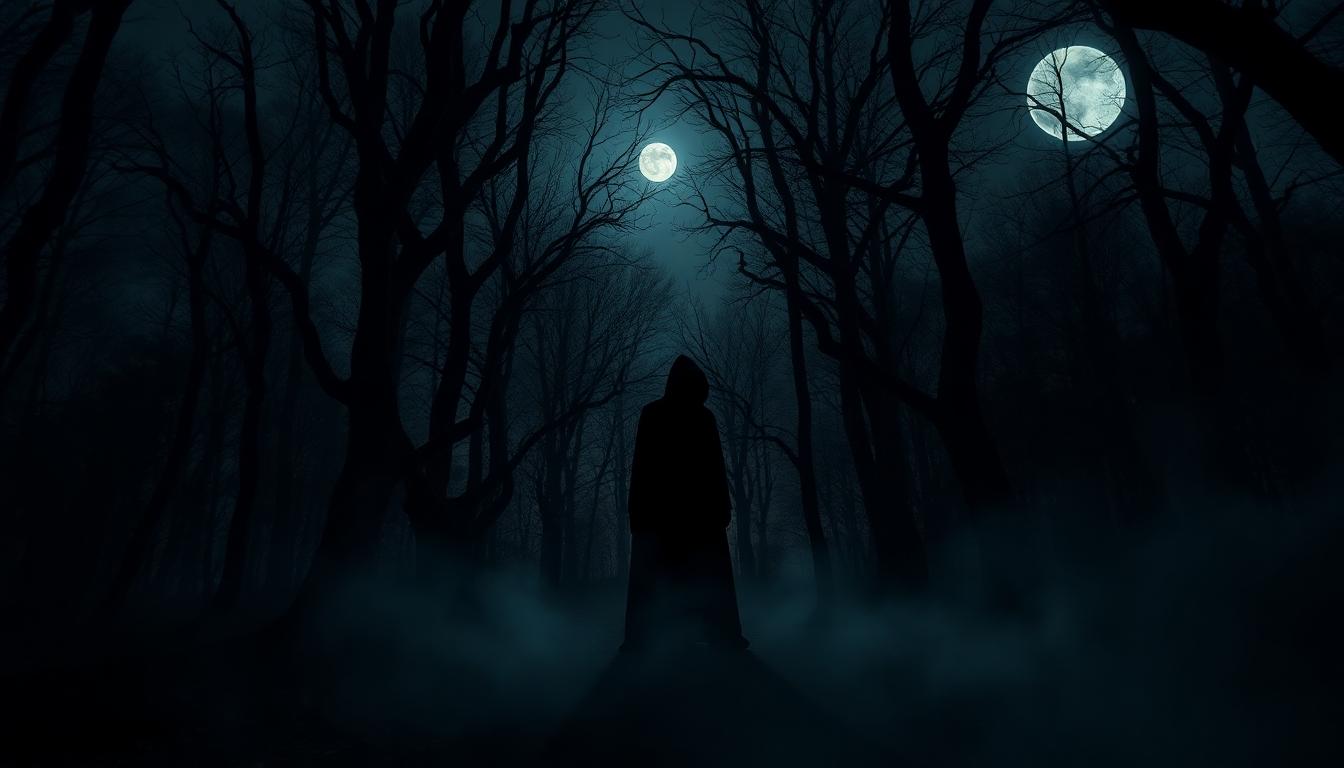
Darkness riddles engage our minds through mystery and the unknown, leveraging powerful themes of suspense that tap into our subconscious. Their inherent ambiguity forces us to confront abstract concepts, creating a unique intellectual satisfaction when we finally arrive at the solution. Popular examples often involve clever paradoxes like “I creep in at night when the sun goes to bed” or metaphorical challenges that defy straightforward logical reasoning.
The Psychological Appeal of Dark Themes
Dark riddles tap directly into humanity’s natural fascination with fear, offering a safe environment to explore concepts like mortality, deception, and danger. They stimulate adrenaline responses similar to what we experience with horror genres while simultaneously providing cognitive benefits such as improved critical thinking skills. Themes involving betrayal (as seen in riddles like “The Hidden Knife”) or existential dread (“The Frozen Heart”) challenge us to navigate moral ambiguity and activate our survival instincts. We’re drawn to these darker themes because they allow us to process complex emotions from a comfortable distance.
How Darkness Challenges Our Perception
These enigmatic puzzles often distort our sense of reality, using sensory deprivation concepts like “no sound” or “hidden” to amplify tension and engagement. They exploit primal fears by incorporating unsettling imagery such as a skull’s “hollow gaze” watching in the darkness. Familiar concepts like time get twisted in ways that disrupt rational thinking, exemplified by riddles describing “a clock without hands.” By immersing us in abstract, unsettling scenarios, darkness riddles test our lateral reasoning abilities and emotional resilience in unique ways. Our brains must work harder to process information when conventional perceptual cues are absent, making the eventual solution all the more satisfying.
Classic Riddles About Darkness and Shadows

Examples of Classic Riddles
- The Invisible Cloak: “I cover everything, yet you cannot see me, / When I’m around, you can’t see a thing. What am I?” Answer: Darkness.
- The Night’s Blanket: “I come out when the sun goes down, / I’m the blanket that covers the town. What am I?” Answer: Darkness.
- Shadows and Light: “What chases the light but never catches it?” Answer: A shadow.
Ancient Shadow Puzzles From Around the Industry
Throughout human history, cultures worldwide have crafted enigmatic puzzles about shadows and darkness. These ancient riddles often served as tools for teaching wisdom and exploring the unknown. Various civilizations incorporated darkness themes into their folklore and philosophical teachings, using them to explain natural phenomena and explore existential questions. Shadow puzzles have been particularly important in Eastern traditions, where the interplay between light and dark represents fundamental cosmic principles. Many ancient cultures viewed shadows not just as absence of light but as entities with spiritual significance.
Literary Dark Riddles Through the Ages
Literature has embraced darkness and shadow themes as powerful metaphorical devices across centuries. Writers frequently employ darkness riddles to explore fear, mystery, and human nature’s hidden aspects. The concept of “lighting darkness” appears as a recurring motif in poetry, symbolizing enlightenment and revelation. Gothic novelists masterfully use darkness to create foreboding atmospheres that heighten suspense and evoke emotional responses from readers. Shadows in literature often represent our dual nature, serving as metaphors for secrets or repressed aspects of characters’ personalities. Many classic literary works feature darkness-themed riddles as plot devices that challenge protagonists to confront their deepest fears or uncover hidden truths.
Modern Brain Teasers Involving Darkness

These contemporary brain teasers challenge your intellect with clever wordplay centered around darkness. Our collection features mind-bending riddles that have captivated puzzle enthusiasts in recent years.
- Candle Riddle: Always wax, yet always wane: I melt, succumbéd to the flame. Lighting darkness, with fate unblest, I soon devolve to shapeless mess.
Answer: A candle
- Darkness as a Need for Sleep: I come at night but am not a thief. I’m what you need for a good sleep.
Answer: Darkness
- Shadows: I come without legs, but spread across the ground. Without a voice, I make no sound.
Answer: Shadows
Contemporary Darkness Puzzles
Modern puzzle creators continue to find innovative ways to incorporate darkness into their brain teasers. These contemporary riddles play with the concept of darkness in ways that connect to our everyday experiences.
- Absence of Light: You turn me on by turning off the light.
This clever wordplay highlights the paradoxical nature of darkness—it appears when light disappears.
- Creation of Shadows: Light brings me to life, but darkness kills me.
Answer: A shadow
This riddle perfectly captures the relationship between light, objects, and the resulting shadows.
- Stars and Moon: I hide the industry when the day is done. Under me, stars and moon have fun.
This riddle personifies darkness as a playful blanket that covers the earth at night, allowing celestial bodies to shine.
Pop Culture References in Dark Riddles
The theme of darkness frequently appears in modern entertainment, inspiring a whole category of pop culture-inspired riddles. Horror movies, supernatural TV shows, and fantasy literature provide rich material for creating captivating brain teasers.
Popular characters from horror franchises often become the subjects of darkness-themed riddles, tapping into our collective fascination with the macabre. These riddles cleverly incorporate familiar tropes from horror narratives, such as the fear of what lurks in the shadows.
The inherent suspense associated with darkness makes it a perfect element for creating tension in riddles. This psychological element explains why darkness-themed riddles remain popular across generations, even as they incorporate references to contemporary media.
Optical Illusion Riddles Related to Darkness
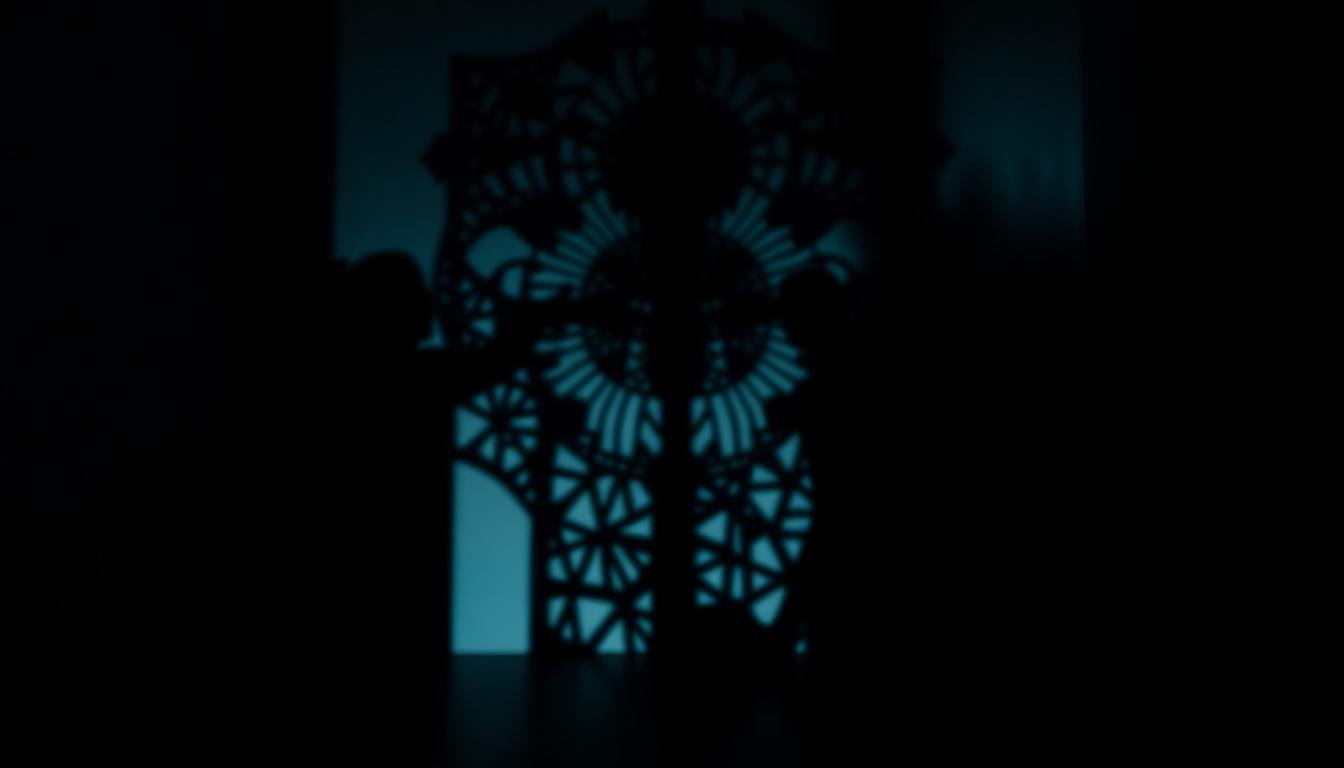
Optical illusions create fascinating darkness-themed riddles by exploiting our visual perception. These mind-bending puzzles leverage shadows, contrast, and visual tricks to challenge how we perceive the interplay between light and darkness.
Shadow Play Puzzles
Shadow play puzzles form a captivating subset of darkness riddles that focus on the manipulation of light sources to create meaningful silhouettes. These puzzles typically involve creating shapes with shadows that lead to questions about what these shapes represent. A perfect example comes from traditional shadow play: “Dress yourself in darkest black, and they are darker still. Always they flee the light, though without the sun there would be none.” The answer? Shadows. These puzzles challenge our spatial reasoning and ability to visualize negative space, making them particularly captivating for visual thinkers. Shadow play has deep cultural roots across various societies, where shadow puppetry evolved from simple entertainment into complex storytelling that often contained hidden riddles and messages.
Light and Dark Contrast Riddles
Light and dark contrast riddles explore the fascinating relationship between illumination and darkness, focusing on transitional states and boundaries. These riddles often use poetic language to describe phenomena that exist at the intersection of light and shadow. For instance: “I dance on the edge of day and night, where darkness meets the light. What am I?” The answer is twilight, that magical time between day and night. Another example plays with the duality of shadows and light: “I am the cloak that night wears, and the sword that day bears. What am I?” The solution—shadows and sunlight—highlights how these natural phenomena serve opposite functions. These contrast riddles work especially well because they tap into universal human experiences of light transitions while challenging our ability to think metaphorically about something we often take for granted.
Philosophical Riddles Exploring the Concept of Darkness
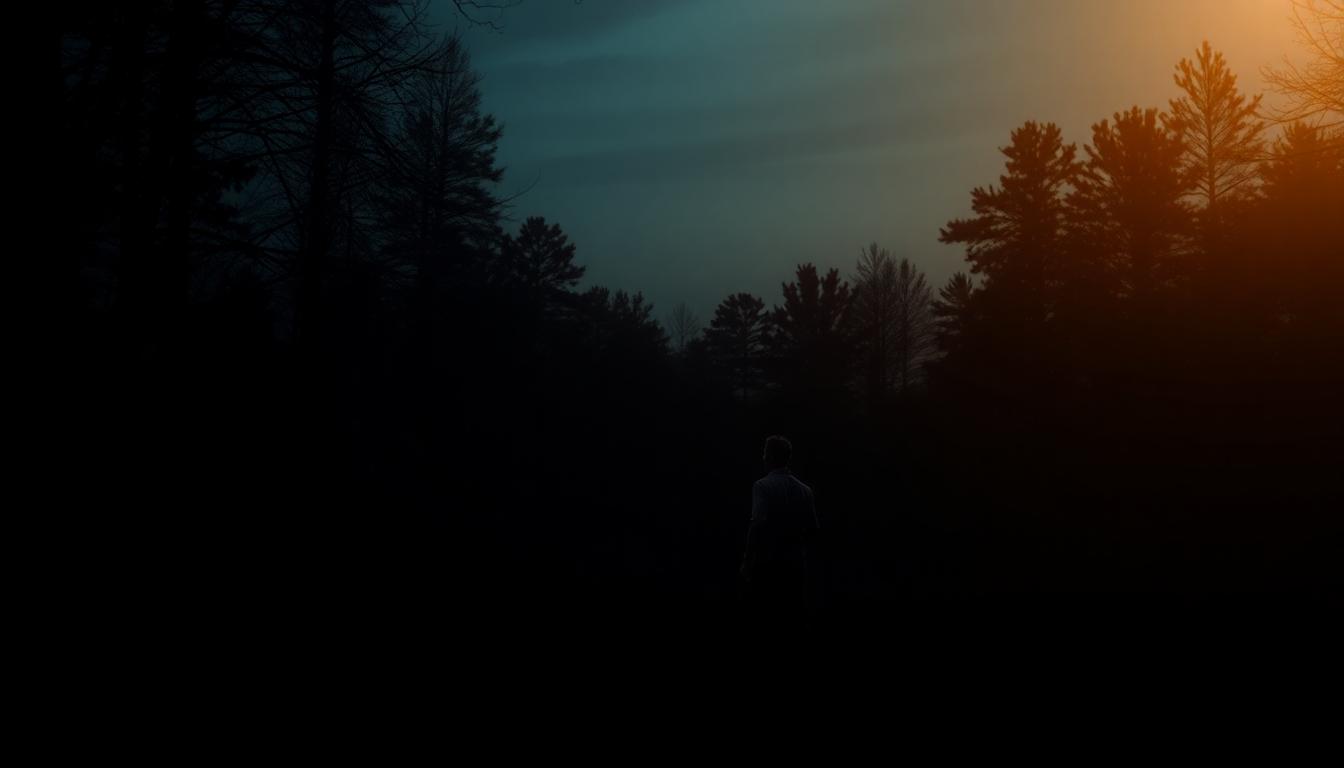
Philosophical riddles about darkness go beyond mere wordplay to explore profound questions about existence, perception, and the unknown. These mind-bending puzzles use darkness as a symbol for life’s greatest mysteries and limitations of human understanding.
Existential Dark Riddles
Existential riddles probe the deepest corners of human experience through the metaphor of darkness. “The more you look at me, the less you see. What am I?” presents darkness itself as the answer, challenging our understanding of perception and absence. This clever contradiction reveals how our attempts to grasp certain concepts can actually obscure them. Another profound example asks, “What is always in front of you but can’t be seen?” with the answer being “the future” – perfectly capturing our relationship with time and uncertainty. The riddle “I am nowhere, yet everywhere. I precede and outlast life. What am I?” points to darkness or void as a representation of the eternal unknown that exists beyond our finite lives. These puzzles don’t merely entertain; they invite contemplation about our place in an often inscrutable universe.
Metaphorical Darkness in Puzzle Form
Metaphorical darkness riddles transform abstract concepts into tangible puzzles that challenge conventional thinking. “What must you break to see?” suggests darkness (as in breaking night with dawn), symbolizing how revelation often requires disruption of the status quo. The riddle “I cover the industry, yet I fit in your palm. What am I?” presents darkness or shadow as something both vast and intimate, exploring the paradox of scale and presence. Another intriguing example asks, “I am full of holes but hold water. I exist only when light fails. What am I?” with shadow or darkness as the answer, connecting voids to our perception of reality. These puzzles intentionally leverage darkness as a rich metaphor for paradox, time, and human limitations, much as philosophers throughout history have used darkness to symbolize life’s inherent struggles and the boundaries of knowledge. By captivating with these riddles, we’re participating in a long tradition of using darkness as a tool for exploring the human condition.
Science-Based Riddles About Darkness
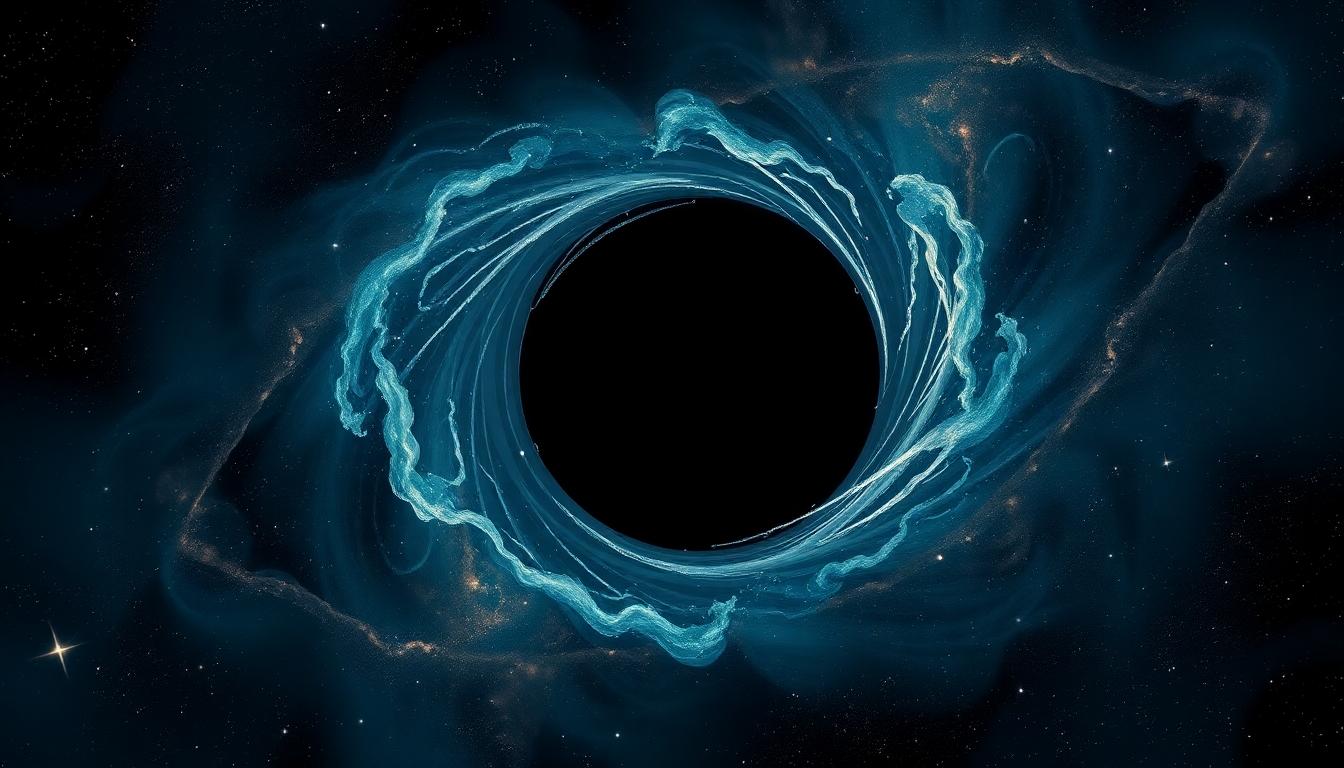
Science offers a fascinating lens through which we can explore the concept of darkness, creating riddles that challenge both our scientific understanding and problem-solving abilities. These brain teasers blend scientific principles with clever wordplay to create captivating puzzles that educate as they entertain.
Astronomical Dark Puzzles
Astronomy provides a rich source of inspiration for darkness-themed riddles, drawing on cosmic phenomena that intrigue scientists and stargazers alike. Black holes, perhaps the most enigmatic dark objects in our universe, feature prominently in these puzzles. Consider this mind-bender: “I’m a region where gravity is strong. Not even light can escape my grasp. What am I?” The answer, of course, is a black hole—a celestial object with gravity so intense that nothing, not even light, can escape once it crosses the event horizon.
Dark matter offers another astronomical mystery perfect for riddles. This invisible substance makes up approximately 27% of the universe yet remains largely undetectable except through its gravitational effects. A riddle might ask: “I’m everywhere in the cosmos but impossible to see. Scientists know I exist by how I bend light and affect galaxies. What am I?” The answer—dark matter—challenges our understanding of the universe’s composition.
The lunar cycle also provides excellent material for astronomical dark puzzles. The new moon phase, when our satellite appears completely dark from Earth, inspires riddles about temporary darkness and celestial rhythms. These astronomical riddles connect us to the vast darkness of space while testing our knowledge of cosmic phenomena.
Physics-Inspired Darkness Riddles
Physical principles governing light and its absence form the foundation for compelling science-based riddles about darkness. The properties of light absorption create intriguing puzzles like: “I’m not seen but cause darkness to fall. I absorb light, making shadows stand tall.” The answer refers to dark or absorptive materials that prevent light reflection.
Shadows themselves inspire physics-based riddles that explore how objects interact with light. A classic example asks: “I follow you constantly but disappear when light vanishes completely. I grow taller or shorter depending on the sun’s position. What am I?” The answer—a shadow—demonstrates fundamental principles of light obstruction.
The wave-particle duality of light offers more sophisticated riddle material. Photons, the elementary particles of light, behave according to quantum principles that often seem counterintuitive. Riddles exploring this concept might challenge solvers to think about how darkness doesn’t technically exist as a physical entity but rather represents the absence of photons reaching our visual receptors.
The physics of black body radiation provides another source for scientific darkness riddles. Objects that absorb all wavelengths of light (appearing perfectly black) also emit radiation based on their temperature, leading to thought-provoking puzzles about the relationship between absorption, emission, and our perception of darkness.
How to Solve Challenging Darkness Riddles
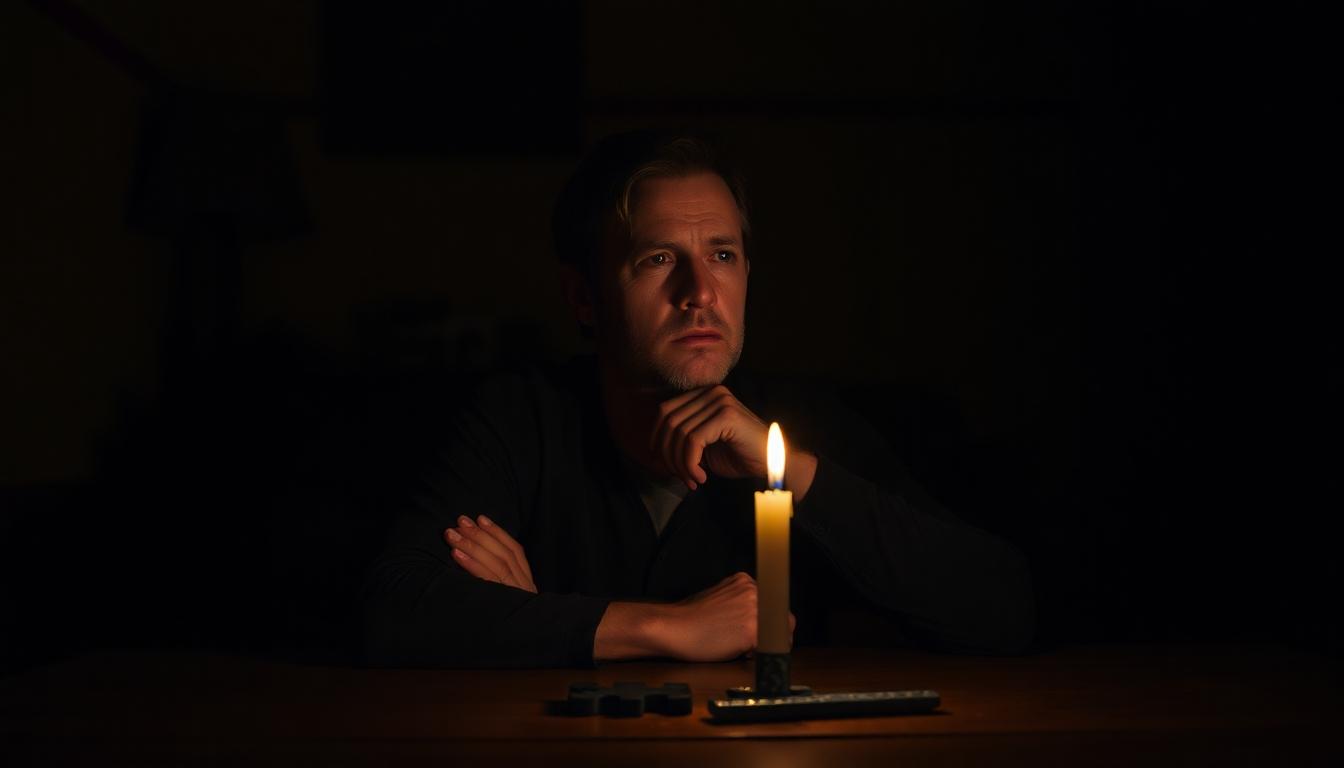
Darkness riddles often require unique approaches and mental flexibility to crack their mysterious codes. Let’s explore effective strategies to help you unravel these enigmatic puzzles.
Common Patterns and Techniques
Recognizing recurring elements in darkness riddles can significantly improve your solving abilities. Most darkness riddles employ metaphorical language that transforms the concept of darkness into tangible ideas or beings. For example, riddles like “I come at night but am not a thief” use personification to give darkness human qualities. Many puzzles in this genre rely heavily on wordplay and double meanings, creating clever linguistic traps that require careful reading.
The emotional and sensory aspects of darkness also feature prominently in these riddles, with references to fear, silence, or the feeling of being enveloped. Patterns often include contrasting darkness with light or describing its properties without naming it directly. When approaching these challenges, read each word carefully as the solution frequently hinges on exact terms or phrases that can be interpreted in multiple ways. Paying attention to these common structures will help you recognize the frameworks these riddles typically follow.
Tips for Lateral Thinking
Successful darkness riddle solving requires breaking free from conventional thought patterns. Avoid literal interpretations at all costs—darkness riddles typically operate on abstract or metaphorical levels rather than straightforward meanings. Context clues scattered throughout the riddle often provide subtle hints about the intended direction of thought, so examine each word for potential alternative meanings.
Try approaching the puzzle from multiple angles by asking yourself different questions: “What besides the obvious could this be referring to?” or “What properties of darkness might this be describing?” Experiment with various perspectives, including viewing the riddle from first-person, as if you are darkness itself. Many successful solvers visualize the scenario described in the riddle, imagining how darkness interacts with the elements mentioned.
Challenging yourself to think beyond conventional associations with darkness (night, fear, shadows) can lead to breakthrough moments. Remember that these riddles often play with our subconscious relationships with darkness, so consider cultural, emotional, and universal human experiences with the absence of light. This mental flexibility, combined with attention to linguistic details, forms the foundation for becoming adept at solving even the most challenging darkness riddles.
Create Your Own Darkness-Themed Riddles
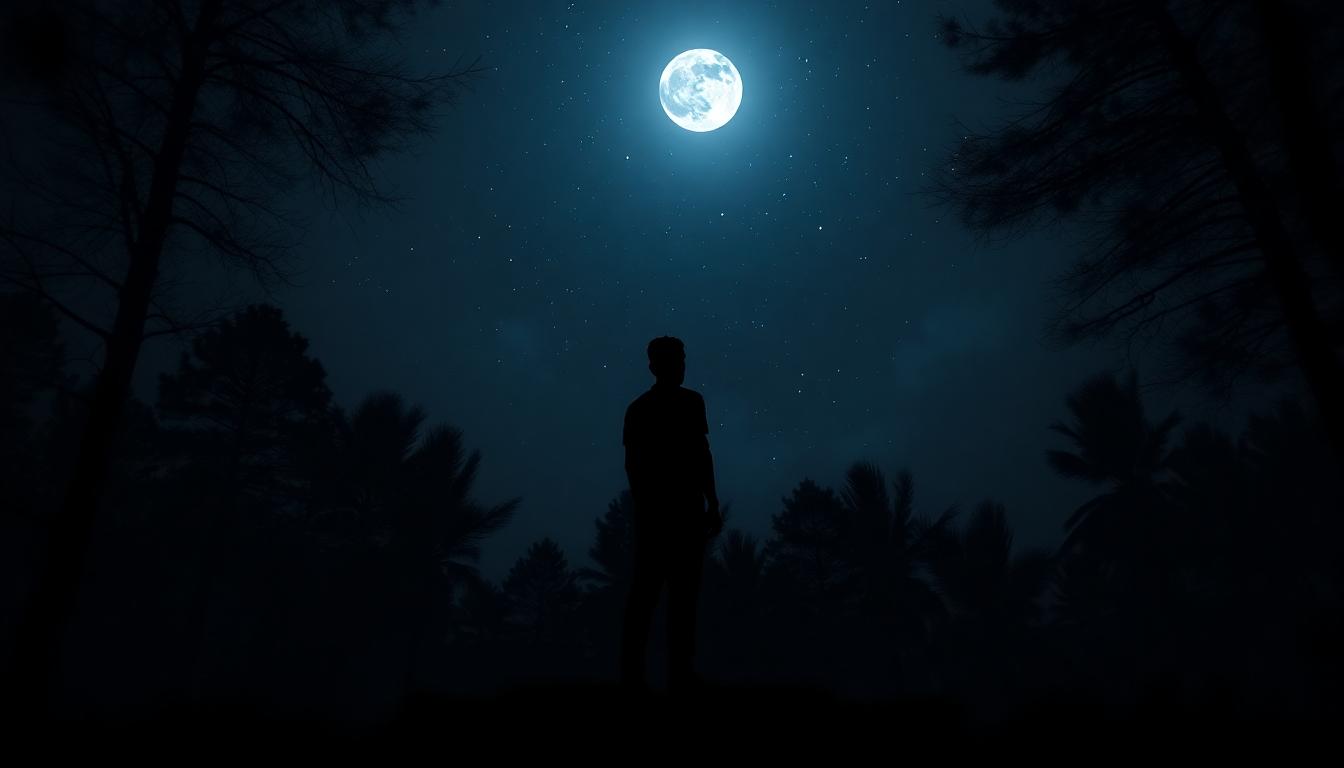
Crafting your own darkness-themed riddles allows you to explore creativity while challenging others with mind-bending puzzles. We’ve compiled expert techniques to help you develop memorable riddles that capture the mysterious essence of darkness.
Structure and Elements of a Great Dark Riddle
Every compelling darkness riddle contains several key components that make it both challenging and satisfying. Mystery forms the foundation of any good dark-themed riddle, as darkness itself embodies the unknown and enigmatic. Your riddle should maintain an air of intrigue that draws the solver in while providing just enough clues to make the solution attainable.
Effective wordplay transforms ordinary darkness riddles into memorable brain teasers. Try using metaphors that describe darkness in non-obvious ways or develop literal wordplay that misdirects while still pointing to the answer. The contrast between light and dark offers abundant opportunities for creative descriptions and clever misdirection.
The surprise reveal represents the most satisfying element of a darkness riddle. Your answer should feel both unexpected yet perfectly logical once discovered, creating that delightful “aha!” moment when everything suddenly makes sense. This balance between challenge and solvability keeps riddle enthusiasts coming back for more.
Examples to Get You Started
Looking for inspiration? These darkness-themed riddles showcase different approaches to crafting enigmatic puzzles:
“I am the absence of light, yet I am always near, a constant companion, year after year.” Answer: Darkness
“I creep in at night when the sun goes to bed. I surround you completely but can’t be touched or held. What am I?” This riddle plays with the intangible nature of darkness while describing its familiar presence.
“I hide the industry when the day is done. Under me, stars and moon have fun.” This example uses visual imagery to create a scene that points to darkness as the solution.
“What brightens the darkness without using a flame?” Answer: The moon This riddle works by establishing a seeming contradiction that challenges conventional thinking.
To create your own powerful riddles, incorporate sensory elements that describe how darkness affects all our senses—not just vision. Play with opposites by contrasting darkness with light to highlight its unique qualities. Leverage common fears and mysteries associated with darkness to tap into universal human experiences and emotions, making your riddle more captivating and relatable.
The Darkest Riddles of All: Unsolvable Mysteries
Darkness riddles invite us to peer into the shadows of our minds where creativity and fear intersect. They challenge our perception while entertaining through clever wordplay and metaphorical thinking.
Whether you’re drawn to classic shadow puzzles with historical roots or modern brain teasers inspired by science and pop culture we hope these riddles have illuminated the rich potential of darkness as a theme.
The next time you find yourself in the dark remember that within this absence of light lies a universe of intellectual possibilities. We encourage you to share these riddles at your next gathering or create your own enigmatic puzzles. After all sometimes the most enlightening experiences come from embracing the darkness.
Frequently Asked Questions
Why are darkness riddles so popular?
Darkness riddles tap into our primal fascination with the unknown. They engage our minds through mystery and suspense while allowing us to explore complex emotions like fear in a safe environment. These riddles challenge our perception by distorting reality and incorporating unsettling imagery, making them intellectually stimulating. The universal experience of darkness also makes these riddles relatable across cultures and age groups.
Are darkness riddles suitable for children?
Yes, many darkness riddles are appropriate for children. The collection includes varying difficulty levels, with simpler riddles perfect for younger audiences. Parents can select age-appropriate puzzles that inspire curiosity without causing fear. Darkness riddles can actually help children develop critical thinking skills and confront common fears in a controlled, playful environment.
What makes a good darkness riddle?
A good darkness riddle maintains an air of intrigue through clever wordplay and metaphorical language. It should offer just enough context clues while avoiding obvious solutions. The best darkness riddles incorporate sensory elements that evoke the experience of darkness and tap into universal human experiences. A satisfying “aha moment” when the answer is revealed completes the perfect riddle.
How do science-based darkness riddles differ from traditional ones?
Science-based darkness riddles blend scientific principles with wordplay, creating puzzles that both educate and entertain. They often incorporate concepts like astronomy (black holes, dark matter) or physics (light absorption, wave-particle duality). While traditional darkness riddles typically focus on emotional or cultural associations with darkness, science-based ones add an intellectual dimension by challenging our understanding of natural phenomena.
What strategies help solve challenging darkness riddles?
Approach darkness riddles with mental flexibility. Look for metaphorical language and consider multiple meanings of key words. Examine context clues carefully and think beyond literal interpretations. Breaking free from conventional thought patterns is essential. Consider cultural and emotional associations with darkness, and remember that solutions often involve clever wordplay or unexpected perspective shifts.
Do darkness riddles have historical significance?
Absolutely. Shadow puzzles and darkness riddles have existed across various cultures for centuries. They’ve traditionally served as tools for teaching wisdom and exploring existential questions. Throughout history, these riddles have helped societies process fears, contemplate mortality, and understand the unknown. Literature across cultures has embraced darkness as a powerful metaphorical device, demonstrating the enduring significance of these themes.
How do optical illusion riddles relate to darkness?
Optical illusion riddles use darkness, shadows, and contrast to challenge visual perception. Shadow play puzzles manipulate light sources to create meaningful silhouettes that engage spatial reasoning skills. Light and dark contrast riddles examine the relationship between illumination and darkness, often using poetic language to describe transitional states like twilight. These riddles exploit how our brains interpret visual information in varying light conditions.
Can I create my own darkness riddles?
Absolutely! Start by identifying core darkness themes that intrigue you—shadows, night, fear, or the unknown. Use metaphorical language and craft clever wordplay around these concepts. Incorporate sensory elements that evoke darkness and tap into universal fears or experiences. Test your riddle on friends to ensure it has the right balance of challenge and solvability with a satisfying reveal.
How do modern darkness riddles differ from classic ones?
Modern darkness riddles often incorporate contemporary experiences and pop culture references from horror movies and fantasy literature. They frequently use clever wordplay relevant to today’s world, such as riddles about technology failures or urban experiences. While classic riddles tend to focus on timeless natural phenomena, modern ones reflect our changing relationship with darkness in an increasingly illuminated world.
What makes darkness riddles intellectually stimulating?
Darkness riddles challenge lateral thinking by requiring solvers to look beyond obvious interpretations. They test emotional resilience through potentially unsettling imagery while engaging critical thinking skills. These riddles often explore profound questions about existence, perception, and the unknown, stimulating both intellectual and philosophical contemplation. The metaphorical nature of darkness allows for multiple layers of meaning, creating richer, more complex puzzles.







